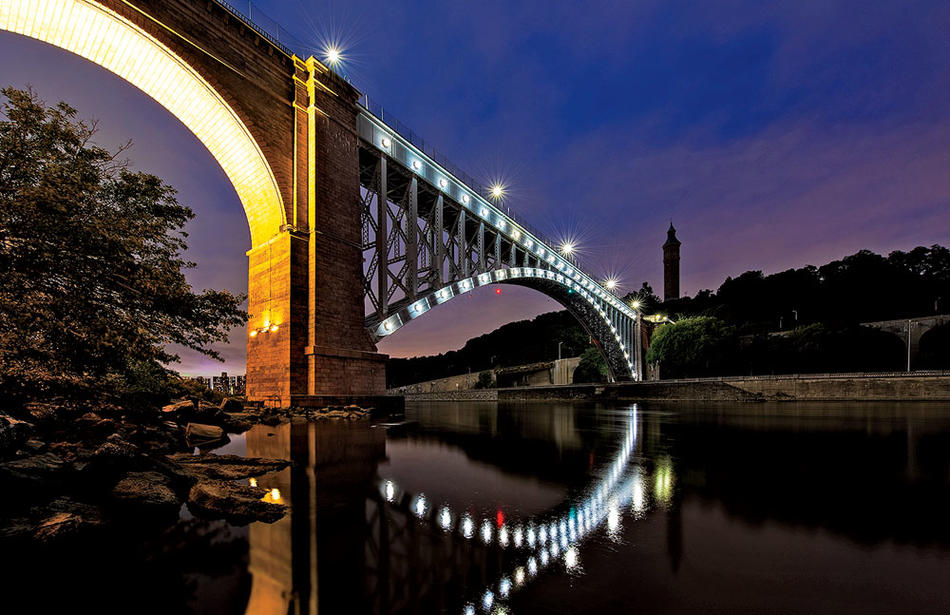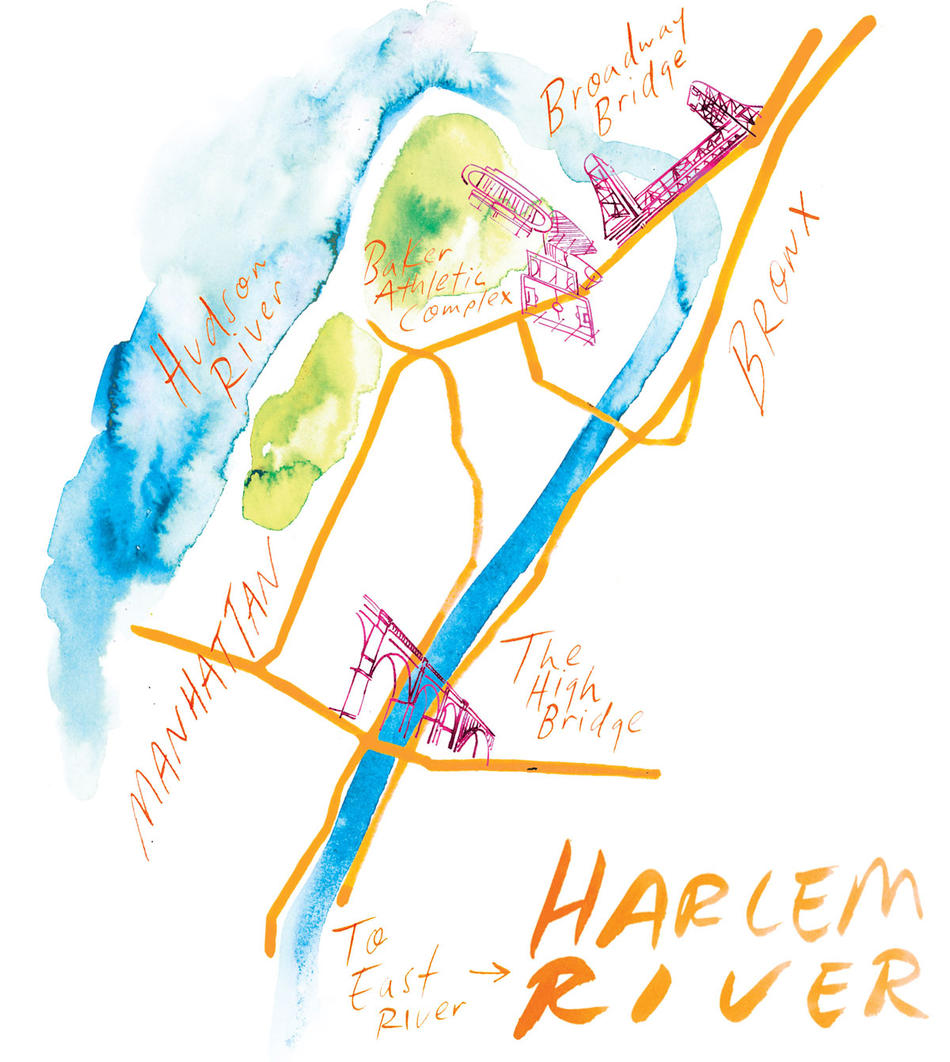On a recent Wednesday, Scot McFarlane, a Columbia doctoral candidate in history who teaches a course called Rivers, Politics, and Power in the United States, shepherded ten undergrads onto the number 1 train headed uptown. The train emerged above ground in Inwood, rattled across the Broadway Bridge, and discharged McFarlane’s class at 225th Street in Marble Hill, the first stop on the other side of the Harlem River. The students were met by Duane Bailey-Castro ’17TC, a teacher and photographer whose Instagram photos of Harlem River bridges had caught McFarlane’s eye. McFarlane had asked Bailey-Castro to lead the group on a tour.
Wearing a white shirt, dark tie, glasses, and a bulging knapsack, Bailey-Castro, who grew up in the South Bronx, took the class to the nearby Metro-North platform, which afforded a view, on the opposite bank, of Columbia’s Baker Athletics Complex. Bailey-Castro explained that this part of the waterway had been unnavigable until the late nineteenth century, when the Harlem River Ship Canal was created to fully link the Hudson and Harlem Rivers. As a result of the construction, Marble Hill, once attached to Manhattan, is now on the Bronx side of the canal — “the only part of Manhattan that’s on the mainland,” Bailey-Castro said.
Bailey-Castro showed drawings and photos of the eight-mile-long Harlem River, which branches from the East River at Randall’s Island, curves along the tapering horn of Upper Manhattan, and bends westward at the island’s tip in an almost horizontal path to the Hudson. As a commuter train shrieked in the distance, Bailey-Castro held up a 1905 tourist postcard of New York’s most wondrous sights: the Statue of Liberty, St. Patrick’s Cathedral, the Flatiron Building, and — the High Bridge? “The High Bridge is the oldest surviving bridge in New York,” Bailey-Castro said. “It was completed in 1848, part of the Roman-style Croton Aqueduct, and was the Brooklyn Bridge of its day — an engineering marvel as well as a tourist attraction.”
Reopened in 2015 as a pedestrian walkway, the High Bridge was downriver, out of view. But it reminded Bailey-Castro of another Harlem River crossing, long vanished: the King’s Bridge, built during the Colonial period. “During the War of Independence the King’s Bridge, which connected Marble Hill to the mainland, was the major artery for the American fighters in Manhattan to escape from the British,” Bailey-Castro said. “On November 25, 1783 — the day the British evacuated Manhattan — George Washington returned to New York City across that bridge.”
As the class walked back to Manhattan over the Broadway Bridge, McFarlane spoke of the rivers of his formative years: the Concord in Massachusetts and the Trinity in Texas, the latter of which is the subject of McFarlane’s dissertation. “The Trinity flows from Dallas–Fort Worth through a rural part of the state into the Gulf of Mexico,” McFarlane said. “The growth of the cities made the river towns downstream harder places to live because of pollution and also flooding from runoff. In my work I think about the connection between rivers and the history of both urbanization and slavery: the Trinity starts in the city and flows through former plantations. And of course rivers facilitated the slave trade and also provided escape routes for people fleeing slavery.”
Like all rivers, McFarlane said, the Harlem River reflects larger political dynamics. “In the twentieth century, Harlem and the Bronx became home to Black and Latino communities, and the river was neglected, while the Hudson was opened up for recreation. It’s useful to think about these differences and what they say about inequality and the history of racism in New York City.”
The group headed back to the subway. But McFarlane wasn’t finished with the mighty Harlem. “Next week, we’ll do a canoe trip,” he said. “To understand the river, we have to experience it. We’ll put in at Roberto Clemente State Park in the Bronx and go about a mile upriver.
“It’s a short trip, but it will give a sense of the river’s strength.”
This article appears in the Winter 2019-20 print edition of Columbia Magazine with the title "The River Less Traveled."




